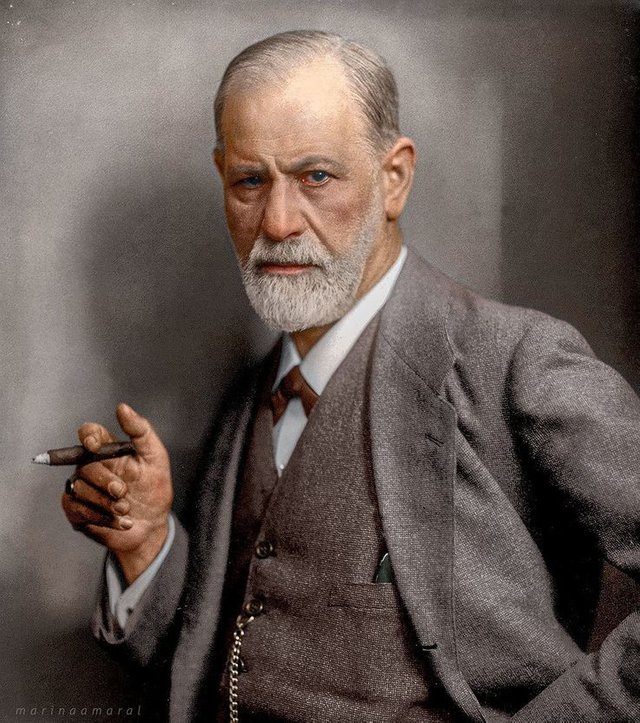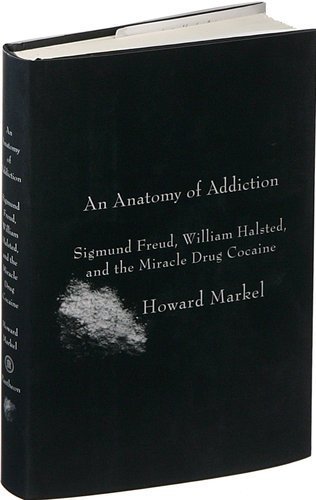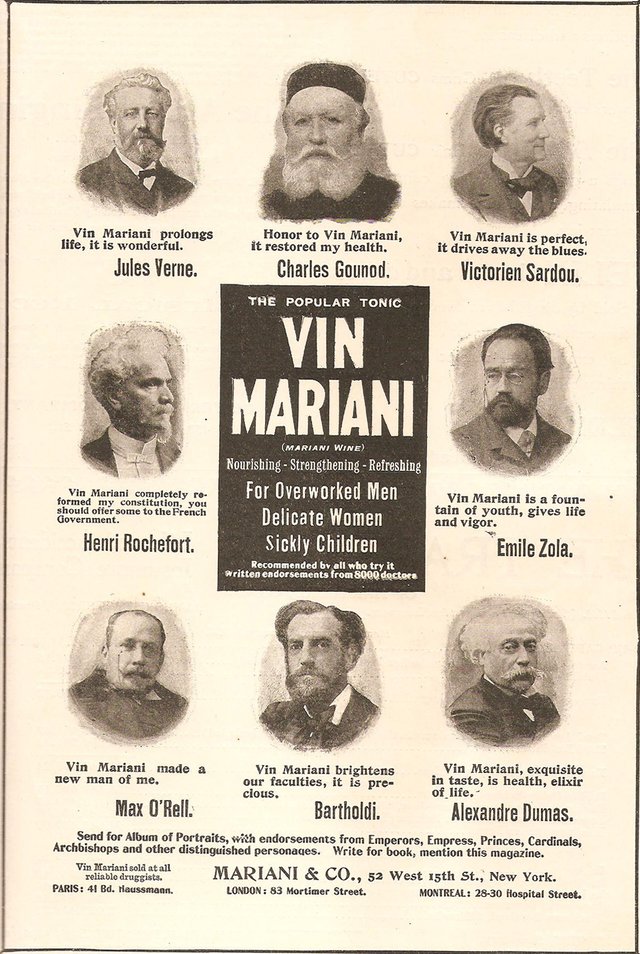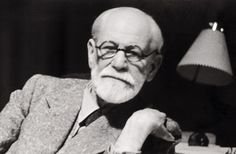There is something more behind this great psychologist.
Greetings to all the Steemians.
Today I have proposed reading and deciphering a bit the life of this psychologist and among many lestura I have noticed that he had a very interesting life, like everyone, we have an inner self totally different to our outer self, with this I mean that, inside of this great psychologist was a person with some vices and curiosities throughout his life, and today I wanted to refer to one of them as his vice for cocaine, and later continue to tell a little more about this great character.
And then since ...
Cocaine became a drug habitually used in the seventies, especially in the nightlife environment. However, long before it was a drug known in the world of the night, the father of psychoanalysis Sigmund Freud already consumed it frequently.
Every time he attended a party, he committed himself to his best wishes and snorted a few grams "to free the tongue", as he wrote in his promise in a letter sent in 1886. However, what at first seemed to be a habit innocuous, over time in an addiction that disturbed the mood and judgment of the Austrian genius.

Cocaine: from South America to Vienna
Freud wrote about his experiences with cocaine in an essay he called Über coca, but until recently these stories had been hidden. This twelve-year phase in which the psychoanalyst consumed cocaine was brilliantly summarized in the book An Anatomy of Addiction, by Howard Markel, a professor at the University of Michigan. This essay tells the story of Sigmund Freud's relationship with cocaine. Freud gradually increased his consumption because he believed that cocaine was something like an elixir of life. Although the narrative thread of the work of Markel is the history of the drug, the author reviews in depth the origins of cocaine, which had a widespread implantation in Europe and the United States, and that many decades later was declared illegal .

Thus, we know that the explorers of South America of the early nineteenth century were the ones who took to their countries of origin the coca leaves that caused so much fury among the tribes and native population, who had the habit of chewing them. The European and American explorers wanted to discover what those magical properties were that provided immunity to the fatigue and hunger of the natives. Experts in chemistry from many parts of the globe inspected and examined the plant until, in the year 1860, they were able to detect and isolate the cocaine alkaloid, responsible for the stimulation of the nervous system that, apparently, conferred those advantages.
Do you think that cocaine could be therapeutic?
At that time, Freud decided to devote his efforts to the study of the therapeutic uses of cocaine, with the aim of increasing his prestige among the Viennese scientific community. Previous experiments had shown, wrongly, that cocaine could cure addiction to morphine (much used at home in those times to relieve pain). With this theoretical basis, Freud began to treat a patient suffering from chronic pain with the stimulant. Later, it was he himself who decided to try cocaine. Freud realized that he had a remarkable effectiveness in avoiding anxiety and increasing libido. Soon after, Freud's sympathy with cocaine was total, and he used to prescribe it to family and friends as a custom, to "turn bad days into good days, and good days into better days."
Freud was convinced that his experimentation with cocaine would mean a revolution in the world of mental health and that this would catapult him to fame. "Whatever the reason, to calm a migraine, an abdominal pain, sinusitis or a nostalgic mood, Freud used cocaine to alleviate the discomfort," reveals Markel. No one was aware of the risks of white powder. Anyone could buy cocaine in pharmacies without any control or prescription, and merchants benefited from the boom of the substance to make it the essential component of a host of ointments, juices, cigarettes and even food products, such as some margarines.

Coca-Cola, Mariani Wine and other uses of cocaine
It is true that, before the big drug lords and cartels emerged, the Italian-French chemist Angelo Mariani won a huge fortune thanks to a mixture of coca leaf extracts and Bordeaux wine. The Mariani Wine, as it was baptized, had a tremendous impact to the point of being, for many years, the favorite drink of great personalities such as Jules Verne, Thomas Edison, Alexandre Dumas and Pope Leo XIII. His ability to "invigorate the body and mind," as proclaimed in the press advertisements of the time, was able to attract the curiosity of John Syth Pemberton, an American war veteran addicted to the consumption of morphine. Pemberton, who lived in Atlanta, patented a tonic similar to Mariani's that he named Coca Frances Wine. This product evolved and went from an alcoholic to a non-alcoholic beverage after the Dry Law in the state of Georgia, renamed Coca-Cola.

And the time has come for the awareness of the dangers of the drug!
It would still be many years before science understood the catastrophic consequences of abuse in cocaine use. Freud stopped taking it in 1896, at the age of 40. He began to experience tachycardia and noticed how his intellectual performance diminished considerably. The cocaine alkaloid was the cause of the premature death of his friend, and may have caused the death of several of his patients. Freud, for a few years, became such a habitual consumer that he used to have a red, damp nose. To put an end to the bad habit of consumption, he tried to stay busy for as long as possible: he would get up at six in the morning, pass consultation to twelve patients, and read and write until well after midnight.
Freud managed to rehabilitate himself and completely abandoned his addiction. However, William Halsted, who was one of the pioneers of modern surgery, was never able to disengage from cocaine use. After studying Freud's texts on the substance, it was proposed to investigate if he could use it as a local anesthetic, thus replacing ether and chloroform. With that objective he made himself a guinea pig, but in the course of a few weeks the first effects began to flourish. Unable to concentrate during the consultations, he stopped going to the Johns Hopkins Hospital, where he had just been appointed head of surgery. On one occasion, Halsted had to leave the operating room in full surgery because the effects of the cocaine did not allow him to hold the surgical instruments. He finally agreed to go into a paranoid clinic, but he never recovered from the psychic sequels caused by the drug, and he also developed a dependence on morphine.
At the beginning of the 20th century, cocaine alkaloid addicts were many, and most managed to stay in the shade thanks to their supposed invigorating properties. "It was not easy to lead a double life, being a renowned doctor in the public sphere and, simultaneously, a consumer of cocaine, a drug addict," explains Markel. The Scottish writer Arthur Conan Doyle was one of these outstanding addicts, and although he never revealed his relationship with cocaine, he left a trace of his habit in many of his works. Sherlock Holmes, Doyle's most emblematic character and who was considered his alter ego, was in the habit of injecting a cocaine preparation when he had no intriguing cases to investigate. His intrepid friend, Dr. Watson, was concerned about Sherlock's use, and tried to persuade him to stop injecting cocaine.

Conclusion
Cocaine: social stigma and abandonment of consumption
Over time the drug was stigmatized and governments increased control over their distribution and consumption. Decades after the rise of the Freudian work, the psychoanalyst had to face innumerable criticisms for the habit he acquired when he was just taking his first steps as a researcher and therapist. The controversy over the degree of influence of white dust in Freud's work can never be resolved, but most researchers agree that his brightest period came after he stopped using it. Freud himself recognized in the last years of his life, perhaps as a way to exculpate his past, "my research on cocaine was a distraction that kept me eager to conclude."